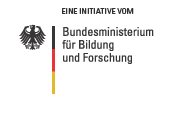Dirk Linke: rubbing shoulders with the enemy
-
 <ic:message key='Bild vergrößern' />
<ic:message key='Bild vergrößern' />
- Linke discovered that the cholera vaccine also acts to some extent against strains of Escherichia coli (ETEC). Quelle: J. Abendroth / Max Planck Institute for Developmental Biology Tübingen
25.08.2011 -
The first contact takes place via the cell wall: Bacterial surface proteins are critical for ensuring that the prokaryotes can bind to their potential hosts. At the Tübingen-based Max Planck Institute for Developmental Biology, Dirk Linke is researching the cell wall of enteric bacteria, a bacterial family that includes a number of pathogens such as Salmonella or Escherichia coli. The biochemist wants to know how the proteins protect bacteria on the one hand, and give them access to host cells on the other. This knowledge is set to help the fight against pathogenic bacteria.
“The cell wall serves not only as an protective outer shield, but also as a mediator with the environment,” says Dirk Linke. It consists of a range of carbohydrates, lipids, and proteins – the biochemist Linke is particularly interested in the proteins. “Among the proteins, the adhesins are like an adhesive that allow the bacteria to bind to a host,” says Linke. Alternatively, they can also adhere together and form a biofilm, which is to difficult to penetrate for the host’s immune system.
Surface proteins as identifying marks
“Surface proteins are the first things to be noticed by other organisms,” says Linke. This makes them ideal candidates for the development of new vaccines, because they must also be able to detect the bacteria. Dirk Linke owes the idea for this – his most prominent project – to a trip to India: He had planned to visit an old classmate, and prior to his departure had had himself vaccinated against a variety of diseases, only declining the vaccination against cholera, as the doctor told him the risk was minimal. Later, when stricken with violent travellers’ diarrhoea, he remembered a comment made by the doctor: The vaccine is effective not only against cholera, but also against travellers’ diarrhoea. Stuck in his hospital bed, annoyed at having turned down the vaccination, he decided to chase up the double effect of the vaccine.
Targeted search for cross-reactions
Linke found that the cholera vaccine also works to some extent against strains of Escherichia coli (ETEC), one of the most common causes of acute diarrhoea. “The fact that the cholera vaccine has this broad spectrum of activity was discovered practically by accident,” says Linke. The reason lies in the structural relationship of the cholera toxin with one of the ETEC toxins. This fortuitous cross-reaction gave the scientist the idea of turning the tables: “We are now looking for structures that carry related bacteria on their surfaces,” says Linke. In effect, this is a targeted search for new vaccines.
Knowing who to ask
Proteins in the cell walls and membranes run like a red thread through the research career of Dirk Linke, during which time his focus has shifted from biology to medicine: During his PhD at the Technical University of Berlin, Linke initially examined the surface molecules in plant cells, and only began to specialise in bacterial surface proteins at the Tübingen Max Planck Institute. “My strength is that, although I am indeed specialised in the topic of membrane proteins, I also know my way around a range of different methods. ”If the methodological knowledge in the working group is not sufficient, he can turn to his cooperation partners. The site in Tübingen offers an ideal research environment in this respect, says the researcher. For example, Linke’s group is one part of the Tübingen Collaborative Research Center SFB 766, an interdisciplinary research network working on bacterial cell walls. “There’s a very cooperative atmosphere among the scientists here.”
| The Max Planck Institute for Developmental Biology |
The scientists here are studying the evolution of life, from the first simple proteins to today’s biodiversity Visit the Institute’s website: here |
It’s all in the mix
The Professor of Biochemistry is using bioinformatic techniques to compare the sequences of bacteria, and thus to determine possible relationships. Biotechnological approaches then enable him to specifically manipulate the adhesins in the bacteria, and then test their various effects in vitro. Finally, his knowledge of structural biology and biophysical procedures comes into play in the detailed investigation of the structure of the proteins. Ideally, what finally emerges is a complete picture: Studies on the functional effect of the structural proteins, and information about their structure. “The objective is to break down the proteins so that we can then understand completely.” To get closer to this objective in the search for improved vaccines will certainly require more time and money: At this time, Linke is working hard to secure further research funding.
Author: Ute Zauft





